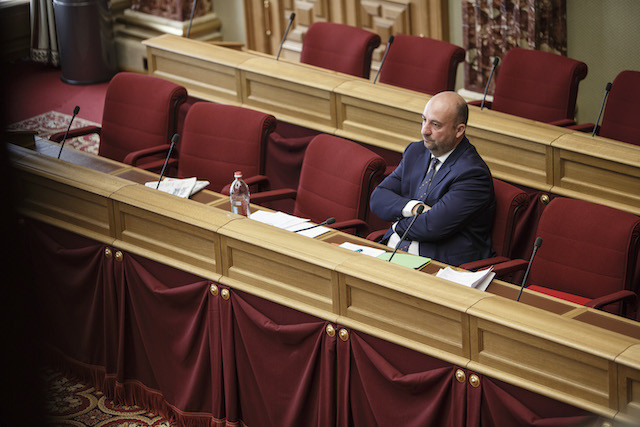Answering questions from MPs within the budgetary control committee on Monday, Étienne Schneider told MPs that he could “not be held responsible for the subsequent changes made to fundamental points of the project”.
The LUXEOSys project was initially priced at €170m, including purchase, launch, construction and operation of the satellite. But the price tag later rose to €350m. Earlier in June, defence officials said the initial budget did not include long-term management or the “scenarios of use”. This, they said, was consistent with defence project funding and legislation covering such projects included little detail on partially unpredictable elements such as long-term costs.
Current defence minister François Bausch (Dié Gréng) has since tabled a new draft law providing for a budget extension, covering costs of up to €350m.
Schneider, who signed off on the satellite and quit his ministerial role in February, was called back to parliament to answer further questions. He claimed the increased costs arose because of changes made to the project following the 2018 elections.
He said the army’s guidelines covered only in-house capabilities and operations to make the army more attractive to qualified young people and to make it more efficient in its specialisation to carry out reconnaissance within Nato. However, the tool will now be subcontracted out. Antennae was originally to be installed at the Härebierg army base in Diekirch. This site has since been abandoned as a location along with plans to use the infrastructure in Findel.
Because the costs of these items would have been covered by other budgets, they could have been avoided had the project not evolved in the way it did.
Schneider stressed that “a new minister has every right to change the direction of a project”.
He did, however, take responsibility for additional €1.2m annual running costs. These, he said, would have been offset by revenues generated from the sale of satellite images. He justified this step by the fact that Luxembourg, as a member of Nato, was committed to maintaining its commitments to the alliance. The project forms part of the country’s strategy to increase defence expenditure by €80m per year to reach €400m by 2020.
It was planned that the LUXEOSys structures would be available to Nato in 2023. A second objective was to create economic spin-offs in Luxembourg through this type of military project.
In reply to questions from members about the initial budget limit of 170 million euros, Schneider said that there was “a misunderstanding between the management and operation of the project.”
Opposition party MPs raised issues about the choice of operator for the project. Investigations will continue in the coming weeks.
